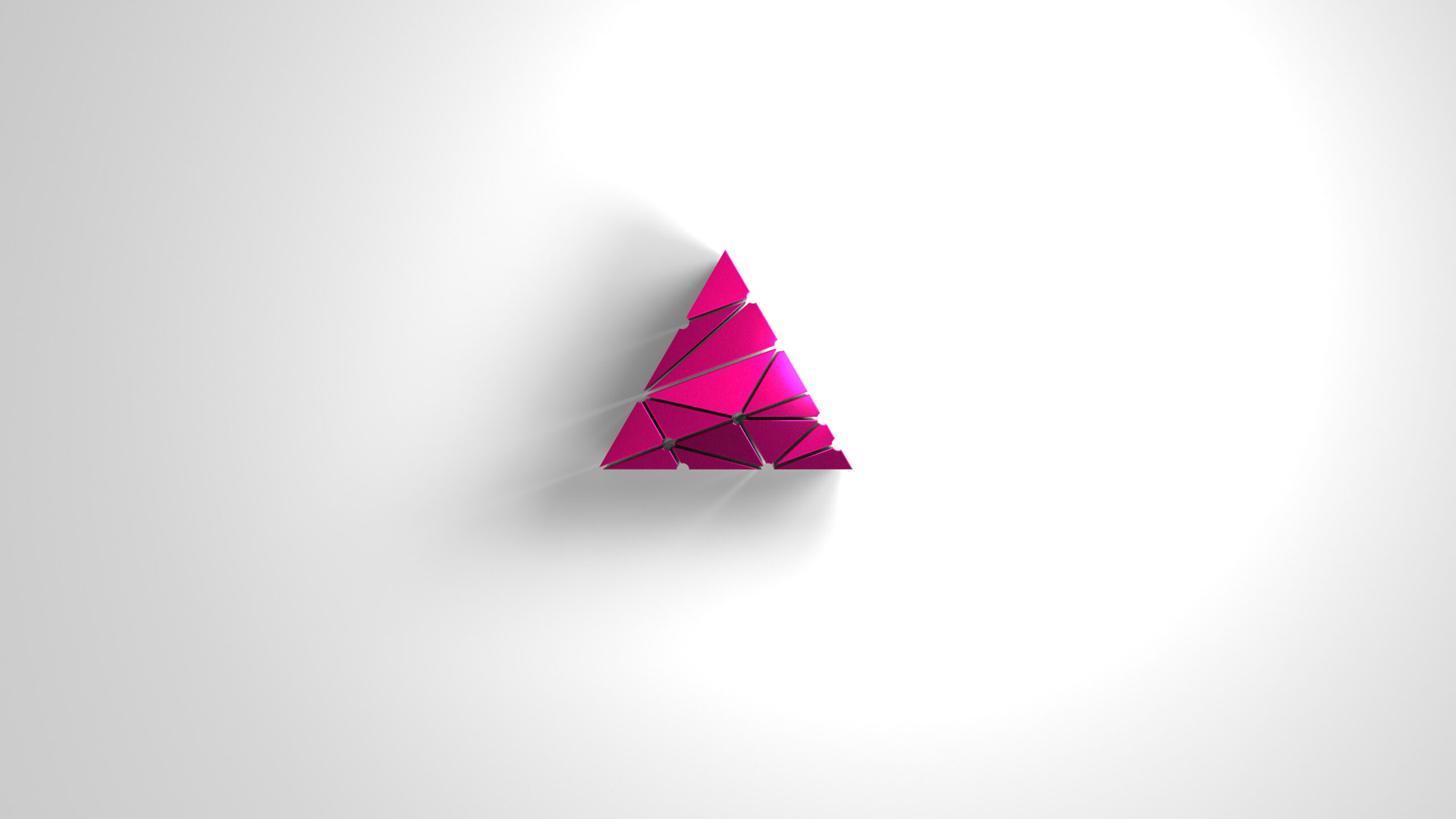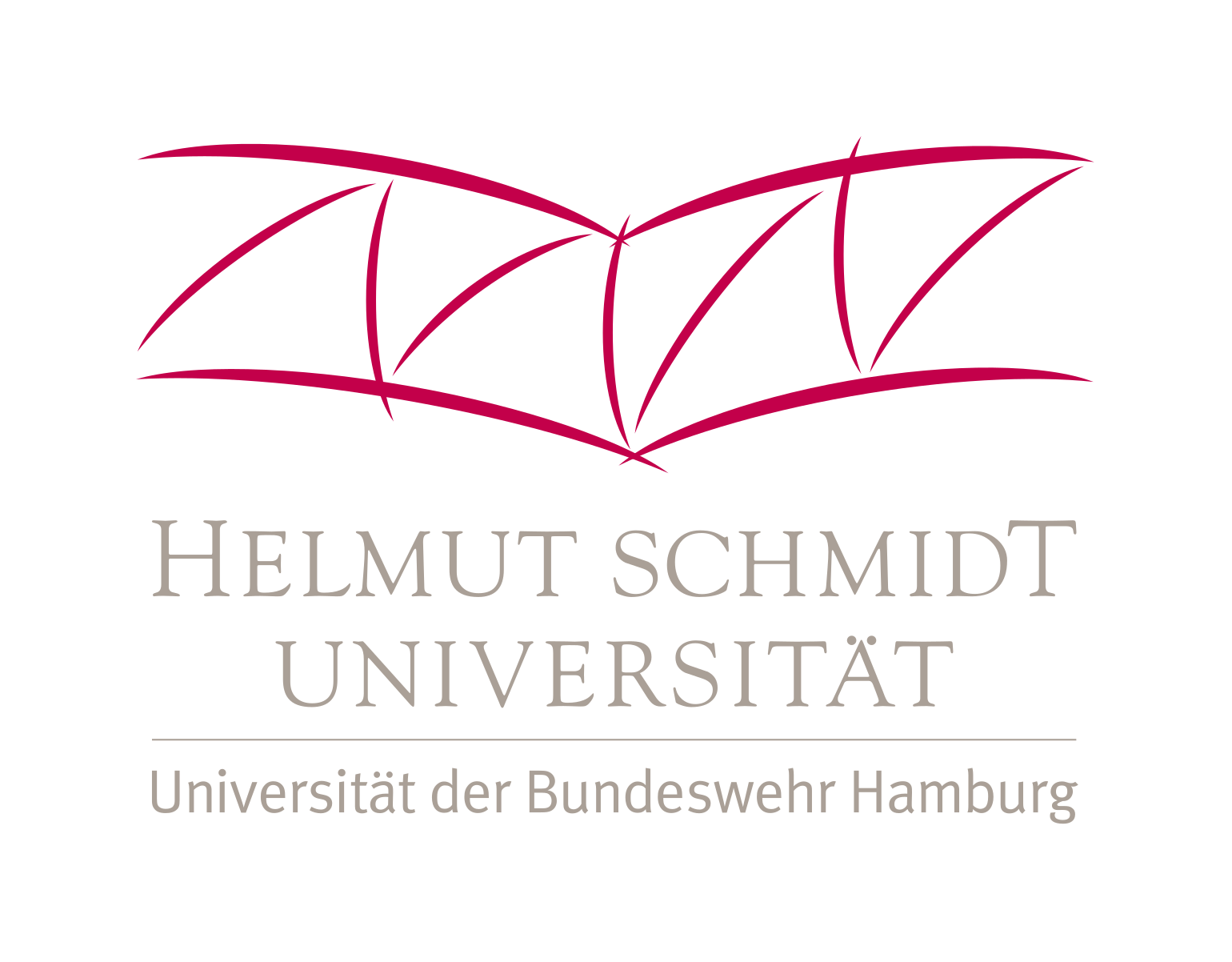We are happy to announce the release of IMPETUS Solver 9.3.0!
New features and improvements
Version 9.3.0 introduces a lot of new features and improvements. For the complete list of updates, see the release notes for the Engine and the GUI.
Shaped charge improvements
We have put a lot of effort into further improving our capabilities for shaped charge modelling. Based on this work we now recommend using finite elements to model high explosives in shaped charge simulations. We have found that it gives better results than using CFD or particles for the explosive since it allows use of more complex material models, more flexibility in the modelling and reduced memory requirements. Surface SPH is used for the liner.
Requiring a solid finite element mesh for the different parts is more demanding to model than simply filling a shell mesh with particles. To meet that challenge, we introduce a new template for very easily setting up shaped charge simulations. In the template one specifies the design of the shaped charge (or EFP) as a 2D profile. The 2D profile is then revolved about the symmetry axis. The parts representing high explosives, casing, wave shaper and support ring are then auto-meshed with tetrahedron elements, whereas the liner is filled with SPH particles distributed in an optimal way.
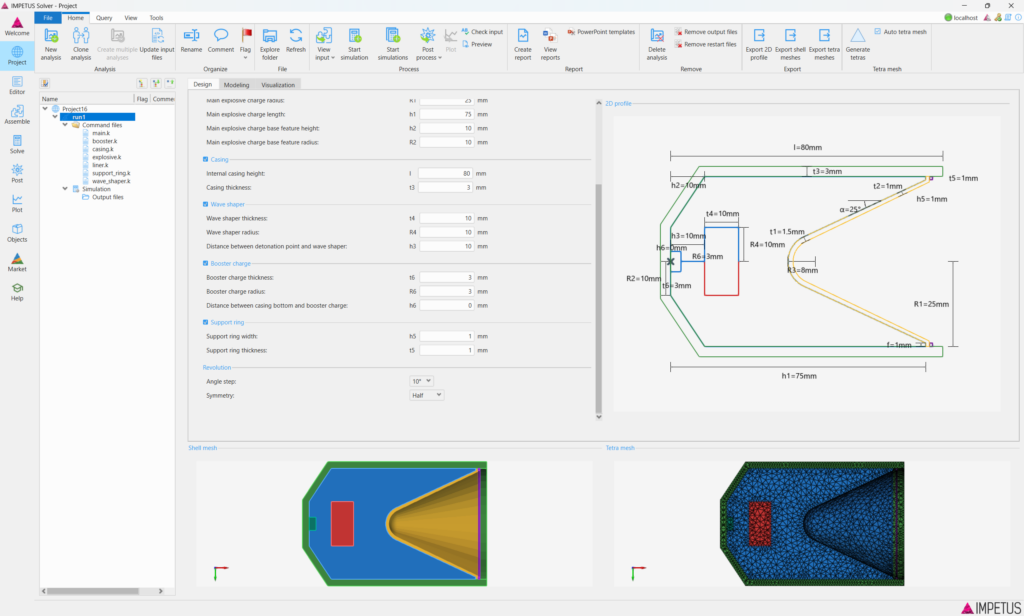
For more information about the new recommended modelling practice, check out the article Coupled FE/SPH approach in Shaped Charge Modelling in our help portal. An article documenting how to use the shaped charge template will come soon. We also plan a webinar in late April where we will present this in more detail, so please sign up for that when it is announced.
New material objects
In the shaped charge template one assigns materials to the different parts in the form of material objects. To help you get started immediately, we have made several new material objects available on Impetus MARKET for free.
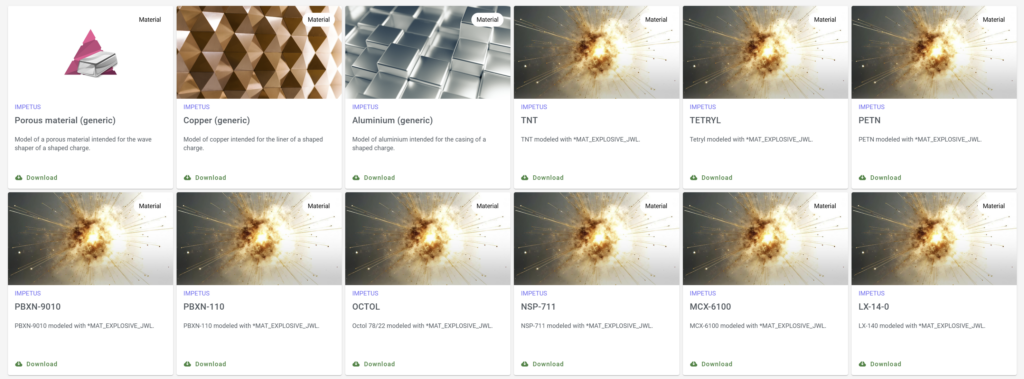
High explosive material objects
We have for a long time had built-in JWL calibrations of different explosive materials in the *CFD_HE command. For finite elements one must use *MAT_EXPLOSIVE_JWL. To unify the support for explosives in CFD and finite elements, we have created dedicated material objects of each of the calibrations. A change in *CFD_HE now allows the user to reference a material ID instead of the built-in calibration. In this way, the same high explosive material object can be used for both FE and CFD, and it opens for new calibrations by Impetus or other object suppliers.
The new high explosive material objects are:
Generic material calibrations for shaped charge
We have also added generic material calibrations for the other parts of a shaped charge. These serve as a good starting point, but note that they are not calibrated against any physical experiments.
- For liner: Copper (generic)
- For wave shaper: Porous material (generic)
- For casing, support ring: Aluminium (generic)
Performance improvements in Engine
In October 2024, version 9.0 introduced some code changes that resulted in longer simulation times. This issue has been resolved, ensuring performance is now comparable to versions prior to 9.0.
VAA GPU memory constraints
To achieve optimal performance, the VAA tool allocates all available GPU memory (if needed). While this works well in most cases, it prevents further use of the GPU since its entire memory will be occupied. In version 9.3.0, users can now set a maximum memory limit for the simulation. Note that if the simulation requires more memory than the cap, the simulation will fail.
Users can set GPU memory cap usage for VAA when starting the simulation by selecting the ‘Explicit GPU selection‘ option and specifying memory limits.
Time-varying 2D curves
We have introduced a new file format, BOUT, for dealing with plots of some attribute over a spatial distance or other property that varies over time. This is now used for SPH shaped charge jet data, which are output to sph_jet.bout and sph_jet_cumulative_mass.bout. A new command *OUTPUT_SENSOR_PATH has been introduced for representing line sensors. This command will output its sensor data in the new BOUT format.
In the GUI, the .bout files are listed in Plot together with the .out files. The difference is that they can be animated over time.
Help in GUI
An off-line version of the articles and documentation in our knowledge base at https://help.impetus.no/ are now embedded within the GUI itself. Note that not all features are supported, for instance can the video tutorials only be viewed on-line, so using the help.impetus.no is still our recommended support site.
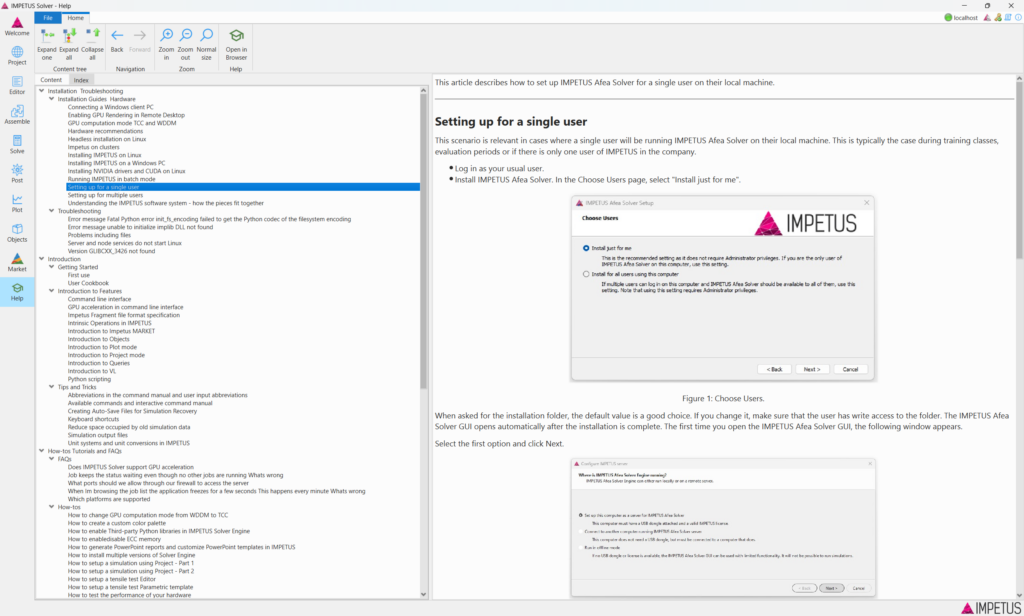
Contact
Added support for function based activation and deactivation of contact definitions.
More information: *CONTACT.
Interior ballistics
Updates to *MAT_POWDER_BURN. We now support user defined shape functions (prescribed burn area versus burn distance) and user defined grain heating functions. It is also possible to account for grain surface treatment, through burn distance dependent burn rate and energy content.
More information: *MAT_POWDER_BURN*POWDER_BURN_SHAPE_FUNCTION.
Shock loading
A new command for surface mass balance when using higher-order tetrahedron elements in highly dynamic events, such as shaped charge modelling.
Script query type
Introduced a new query type allowing users to write Python or command-line scripts that execute during or after simulations.
Path selection by connected faces
Users can now select a path of connected faces.
Principal strain calculation
Support added for calculating principal strain in the Contour plot Create menu.
